

Ornata V2: The actually okay keyboard without a purchase recommendation
Razer's mecha membrane keyboard enters its second round with the Ornata V2. Despite a few new features, I'm not convinced by the actually-okay keyboard. A membrane keyboard remains a membrane keyboard - even if it "clicks" when you type.
Clack, clack, clack. It sounds like a mechanical keyboard. Similar to the Huntsman from Razer, which I use at work - minus the metallic reverberation caused by the aluminium casing. Logically, the Ornata V2 has a plastic casing.
Clack, clack, clack. Something is different. Just what? Clack, clack, clack. Somehow there is no satisfaction. Clack, clack, clack... Ding, ding, ding! Now I know what's bothering me: if I press the keys all the way down, it feels like I'm typing on rubber. Logically, I'm pressing on the rubber domes of the Ornata, which trigger the keystroke. A membrane keyboard remains a membrane keyboard, even if I first press a wire to the side on the way to the rubber, as I'm used to doing with mechanical keyboards.
A little keyboard basics
Under the keycaps on membrane keyboards - also known as "rubber domes" - is a rubber dome. When you press the key, you also press the rubber dome together. When you release it, the rubber springs back into its original position and so does the key.
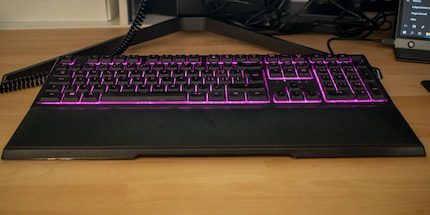
Under the rubber are several foils - or membrane layers - hence the name "membrane keyboard". These ensure that your keystrokes are converted into electronic signals. Membrane keyboards are the most widely used keyboards. Your office keyboard is most likely a membrane keyboard.
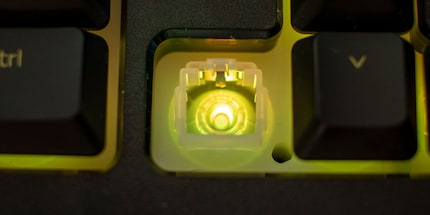
With the Mecha Membrane Switch, Razer combines the membrane switch with a mechanical switch. This keyboard is not triggered by a mechanical signal, but by the membrane. The only mechanical part of the Ornata V2 is a wire that is pushed to the side when the key is pressed down, producing a clicking sound and providing haptic feedback.
How well does it work
As I described at the beginning, the typing feel on the Ornata is disconcerting. I say that as a mechanical switch snob. I need the feel of a Cherry MX Blue. That definitive click that tells me: "Congratulations! You pushed me!" If you like typing on a membrane keyboard, the Ornata might be for you. If not, you'll feel as uncomfortable as I do.
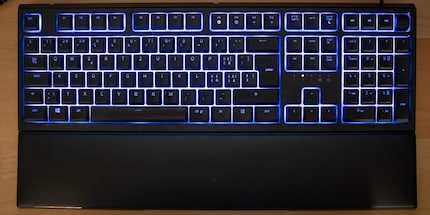
In fact, the Ornata does not always trigger when you hear and feel the click and snap of the wire, but only shortly afterwards. At least with some buttons. For some it works quite well. Membrane keyboards are not an exact science. As a trained humanities scholar, this shouldn't bother me, but it does.
In everyday life, you can type just like on any other office keyboard - plus acoustic and haptic feedback. What about gaming? Here, too, the Ornata fulfils its purpose. The V2 now has N-key rollover on board, so multiple actuations of the switches are no problem. I didn't experience any ghosting either. But that's nothing special: I expect N-key rollover and the absence of ghosting on every gaming keyboard, otherwise it's a case for the rubbish bin anyway. Razer specifies the polling rate for signal transmission as 1000 Hz.
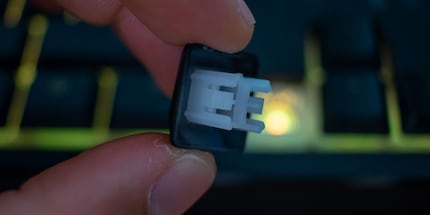
The low-profile keycaps are beyond reproach. They are made of ABS and offer good grip in heated battles or when writing passive-aggressive Microsoft Teams messages. What is less good is that the keys have a relatively large amount of play and therefore rock back and forth. This is due to the relatively long stem of the switches.
What else the device can do
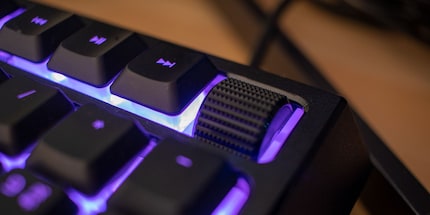
Compared to the first version of the Ornata, the V2 now offers a multifunctional rotary control, which you usually need for the volume, and media buttons. You can also mute by pressing the rotary control. It offers a good grip so that you can turn the volume down or up quickly and precisely even when you're in a hurry. However, like the mecha membrane switches, I don't think the feedback from the wheel is very good. It is not precise enough. All buttons are freely programmable via Razer's Synapse software. There you can create customised profiles, key assignments and macros.

Although I'm not a fan of RGB, I really like the Chroma RGB backlighting on the Ornata. The entire membrane is evenly illuminated. It looks as if the keys have underbody lighting. Incidentally, you can also change the lighting with the Synapse software.
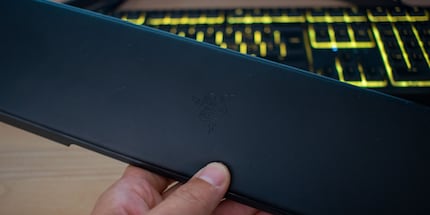
Also included in the scope of delivery is a padded palm rest made of artificial leather, which can be magnetically attached to the keyboard. This took some getting used to for me at first, as I don't normally use any pads. As the Ornata is rather high at the bottom at 22 millimetres, I'm glad about that. Even on hot days, it is not uncomfortable to rest the palm of my hand on the artificial leather. This surprises me as a frequent and heavy sweater. The keyboard can be raised in two steps, which most people would probably make use of due to the height of the Ornata.
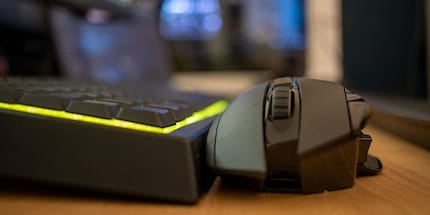
The textile-covered USB cable can be routed away from the keyboard in three ways - left, centre, right - on the back of the keyboard. However, you cannot remove it. At two metres long, the cable is probably long enough for most setups. In my case even too long. It would be nice if Razer had found a way to hide excess cable on the back.
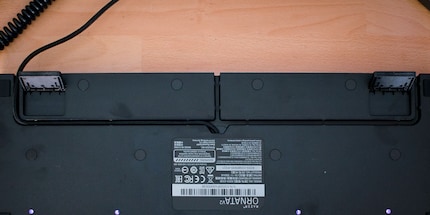
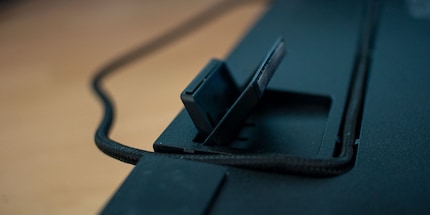
Conclusion
The Ornata V2 is actually a decent keyboard. Actually. Because it has too many buts. The acoustic and haptic feedback of a mechanical keyboard is there, but at its core, the Ornata V2 is a membrane keyboard and it feels like one. It glows beautifully, but is made of plastic. The keycaps offer a good grip, but the switches wobble just as much. And then there's the biggest but: just under 120 francs for the Ornata is too much. There are better things for slightly more money. For example, the Huntsman from Razer itself. It actually does everything better and currently only costs ten euros more. Or the Apex 5, which our colleague Livia Gamper has been wanting to write about for what feels like an eternity. She also has hybrid mecha membrane switches. Although it is more expensive, it is also better made and comes with an OLED display.
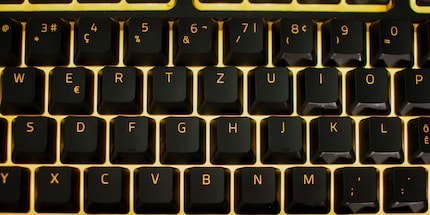
Personally, I only see a small market for keyboards with hybrid keys like this. Either you like mechanical switches or membrane. However, the manufacturers seem to sell them, otherwise the Ornata V2 wouldn't exist. If the keyboard were for sale for 80 cent, I would give it a conditional recommendation. Conditionally, because as a mechanical switch snob, nothing but the right clack, clack, clack comes into question for me.



